GENERAL DATA
Plant parts: Leaf and Seed
Cultivation mode: Wild collection/Cultivated
In manufacturing: Cosmetics, oil, pharmaceutical, extracts.
In food: Meats, dairies, sauces, soups, salads, rice, spices, tea.
🌿 Industries That Use Dill Leaves (Anethum graveolens L.)
Dill Leaves (Anethum graveolens L.)—commonly known as “Shivid” in Persian and used both as a culinary herb and a traditional remedy.
🪴 What Are Dill Leaves?
Dill leaves—also called dill weed—are the feathery, aromatic green leaves of the Anethum graveolens plant, native to the Mediterranean and West Asia. While dill seeds are often used as a spice, the leaves are valued for their fresh, grassy, anise-like flavor and essential oils rich in carvone, limonene, and apiol.
Dill leaves are widely used in cooking, herbal medicine, natural cosmetics, and aromatherapy blends.
1. Food & Culinary Industry
Dill leaves are a staple culinary herb, widely used in fresh and dried forms for seasoning.
Common Uses:
-
Flavoring for soups, pickles, rice dishes, and fish
-
Integral to traditional dishes in Iranian, Eastern European, and Scandinavian cuisines
-
Used in herbal butters, vinaigrettes, and dips
-
Popular in ready-to-eat meals, sauces, and canned vegetables
✅ Available fresh, freeze-dried, or dehydrated for seasoning blends
✅ High demand in gourmet, ethnic, and health food markets
2. Pharmaceutical & Herbal Medicine Industry
Dill leaves are known for their digestive, carminative, and calming properties.
Traditional & Functional Uses:
-
Stomach soothing: relieves bloating, gas, and indigestion
-
Anti-colic: used in pediatric drops and teas
-
Mild sedative: helps calm nervous tension and restlessness
-
Galactagogue: sometimes used to support breast milk production
✅ Often used as tea infusions, tinctures, or fluid extracts
✅ Included in herbal formulations with Fennel, Anise, and Chamomile
3. Nutraceuticals & Functional Foods
Dill leaves are valued for their antioxidant flavonoids, vitamin C, and essential oils.
Applications:
-
Incorporated in green powder blends and digestive support capsules
-
Functional teas with anti-bloating and detoxifying effects
-
Sometimes included in liver-support or menstrual comfort formulas
✅ Recognized as a GRAS herb and widely accepted for dietary use
4. Cosmetic & Personal Care Industry
Dill extracts are used in natural skincare and aromatherapeutic products.
Applications:
-
Facial tonics and anti-aging serums for skin elasticity
-
Herbal face masks and cleansing waters
-
Used in herbal shampoos for its gentle toning effect
-
Fragrant bath teas or herbal steam blends
✅ Natural astringent, skin-soothing, and mildly antimicrobial
5. Aromatherapy & Essential Oil Industry
While dill essential oil is more commonly derived from seeds, the leaves also contribute to gentle, uplifting aromatic profiles.
Uses:
-
Used in relaxation blends, digestive massage oils, and nervous system tonics
-
Fragrance component in fresh herbal accord perfumes
✅ Leaf extract is lighter and less pungent than seed oil
6. Agricultural & Companion Planting
Dill is used in organic farming and insect control systems.
Benefits:
-
Attracts beneficial insects (like ladybugs and pollinators)
-
Repels aphids and spider mites
-
Used in bio-pesticide and garden wellness kits
✅ Common in permaculture and regenerative farming circles
✅ Summary of Key Applications
| Industry | Common Uses |
|---|---|
| Food & Culinary | Seasoning for rice, fish, sauces, pickles, soups |
| Pharmaceutical & Herbal | Digestive aid, colic relief, nervous calmative |
| Nutraceuticals | Digestive tea blends, antioxidant-rich powders |
| Cosmetics | Toning serums, bath infusions, herbal facial masks |
| Aromatherapy | Uplifting and digestive support blends |
| Agriculture | Companion planting, organic pest management |
🌟 Key Features
-
Rich in essential oils (carvone, limonene, myristicin)
-
High in vitamin A, C, and flavonoids
-
Traditionally used in Iranian, Indian, and European folk medicine
-
Multifunctional use across culinary, wellness, and skincare sectors
-
Available as fresh herb, dried cut leaves, powder, or extract
🌰 Industries That Use Dill Seeds (Anethum graveolens L.)
Here is a professional, structured breakdown for Dill Seeds (Anethum graveolens L.)—a highly aromatic spice and herbal remedy with industrial relevance across health, food, and pharma sectors.
🌿 What Are Dill Seeds?
Dill seeds are the dried, oval-shaped fruits of the Anethum graveolens plant. While often grouped with culinary spices, dill seeds are pharmacologically distinct from the plant’s leaves due to their rich essential oil content, especially carvone, limonene, and dillapiol.
They possess a warmer, more intense aroma than dill leaves and are extensively used in digestive, antimicrobial, flavoring, and traditional medicinal contexts.
1. Food & Spice Industry
Dill seeds are valued as a warm, aromatic spice, especially in pickling and regional cuisines.
Culinary Applications:
-
Pickling spice for cucumbers, cabbage, onions
-
Flavoring for breads, stews, lentils, and savory pastries
-
Used in Eastern European, Indian, Middle Eastern, and Mediterranean cuisines
-
Included in mustard blends, spice rubs, and cheese seasonings
✅ Sold whole or ground
✅ Heat-stable—used in cooking, baking, and oil infusions
2. Pharmaceutical & Herbal Medicine Industry
Dill seeds are a cornerstone of herbal gastrointestinal care, with carminative, antispasmodic, and antimicrobial effects.
Medicinal Uses:
-
Anti-flatulent: relieves bloating, gas, indigestion
-
Pediatric colic relief: core ingredient in infant gripe waters
-
Mild diuretic and lactation support (galactagogue)
-
Used in cough syrups and oral rinses for antibacterial effect
-
Aids in menstrual comfort and cramp relief
✅ Used in teas, tinctures, essential oils, and capsules
✅ Frequently paired with Fennel, Cumin, or Coriander
3. Essential Oil & Aromatherapy Industry
Dill seed essential oil is a commercially extracted compound used in digestive formulas, massage oils, and flavoring blends.
Essential Oil Profile:
-
High in carvone, a potent digestive stimulant
-
Used in natural antispasmodic massage oils
-
Featured in diffuser blends for relaxation and gut health
✅ Also applied in flavoring pharma syrups and herbal toothpastes
4. Nutraceutical & Functional Foods
Dill seeds are used in functional teas, detox formulas, and nutritional blends aimed at digestive wellness.
Nutraceutical Uses:
-
Added to gut health teas, detox powders, and enzyme blends
-
Sometimes included in women’s wellness or menopause support formulas
-
Used in mineral-rich infusions due to mild calcium content
✅ Available as capsules, loose herbal blends, or extract powders
5. Veterinary & Ethnoveterinary Use
In traditional animal care systems, dill seeds are used for ruminant digestion, especially in goats and cattle.
Uses in Livestock:
-
Added to fodder or drenches for flatulence
-
Used in organic livestock formulations
✅ Cited in Ayurveda, Iranian Traditional Veterinary, and folk practices
6. Cosmetic & Personal Care Industry
Used sparingly in natural oral care and botanical perfumes.
Applications:
-
Dill oil used in herbal mouthwashes
-
Occasional use in herbal perfumes or men’s skincare for spicy notes
-
Anti-inflammatory and antimicrobial effect in gum health products
✅ Mild flavoring in herbal rinses and breath sprays
✅ Summary of Key Applications
| Industry | Common Uses |
|---|---|
| Food & Spice | Pickling, savory spice blends, bread and lentil seasoning |
| Pharmaceutical & Herbal | Digestive aid, colic relief, lactation support, cough remedy |
| Essential Oil & Aroma | Digestive massage oils, calming blends, syrup flavoring |
| Nutraceuticals | Gut teas, detox blends, women’s health formulas |
| Veterinary | Flatulence control in ruminants, organic livestock tonics |
| Cosmetic & Oral Care | Herbal mouthwash, gum care, aromatic oils |
🌟 Key Features
-
Rich in carvone and limonene for digestive and antimicrobial benefits
-
Traditionally used in gripe water, flatulence treatments, and women’s tonics
-
Common in Eastern European pickling and Ayurvedic formulations
-
Available in whole seed, powdered, or essential oil form
-
Supported by both modern clinical studies and folk medicine legacy
🌿 Comparison: Dill Leaves vs. Dill Seeds (Anethum graveolens L.)
| Aspect | Dill Leaves | Dill Seeds |
|---|---|---|
| Botanical Part | Aerial leafy part (herb) | Fruit (often called “seed”) |
| Form | Fresh, dried cut, powder, or extract | Whole seed, ground, or oil |
| Aroma & Flavor | Fresh, grassy, mild anise-like | Warm, earthy, pungent, stronger |
| Main Essential Oils | Limonene, phellandrene, myristicin | Carvone, limonene, dillapiol |
| Taste Profile | Delicate and green | Bitter-warm and aromatic |
| Culinary Uses | Used as a fresh herb in soups, rice, fish, salads | Used as a spice in pickles, breads, stews, spice blends |
| Solubility | Used fresh or dried in food & infusions | Infused, boiled, or ground—more robust for cooking |
| Digestive Benefits | Mild carminative, light stomach tonic | Stronger carminative, antispasmodic, anti-gas |
| Use in Children | Gentle, can be used in teas for children | Used in gripe waters, infant colic syrups |
| Pharmaceutical Use | Mild sedative and antioxidant support | Antiflatulent, cough remedies, lactation support |
| Cosmetic Use | Herbal toners, bath infusions, masks | Essential oil in oral care and massage oils |
| Essential Oil Yield | Low from leaves | High from seeds |
| Herbal Classification | Soft medicinal herb (digestive/nervine) | Medicinal spice and aromatic carminative |
| Traditional Systems | Used in Persian, Indian, and Mediterranean kitchens and folk medicine | Common in Ayurveda, Unani, Iranian, and Eastern European traditions |
| Commercial Form | Fresh leaves, freeze-dried leaves, or powdered | Whole seeds, ground powder, or essential oil |
| Storage & Shelf Life | Shorter (especially fresh) | Longer, more shelf-stable |
✅ Summary Comparison
| Feature | Dill Leaves | Dill Seeds |
|---|---|---|
| Strength of Action | Mild | Potent |
| Best Use | Culinary herb, gentle wellness | Spice, therapeutic oil, digestive formulations |
| Oil Yield & Commercial Use | Low oil yield, used for mild teas or cosmetics | High oil yield, used in pharma and aromatherapy |
| Industries | Food (fresh/dried), cosmetics, herbal teas | Food (spice), pharma, essential oils, nutraceuticals |
🌟 Final Notes:
-
Dill Leaves are best for culinary freshness, herbal infusions, and gentle digestive care.
-
Dill Seeds serve as a concentrated spice and therapeutic agent, particularly for the gastrointestinal tract and colic.
-
Both parts are used across culinary, pharmaceutical, and cosmetic industries but serve different functional roles.
PRODUCT NAME IN DIFFERENT LANGUAGES
Persian Name: شوید/ Shevid
German Name (Deutschland, Austria, Switzerland): Dill
French Name (France, Belgium, Switzerland, Quebec): Aneth, Faux Anis, Fenouil bâtard
HARVEST CALENDAR
Feb
Mar
Apr
May
Jun
Jul
Aug
Sep
Oct
Nov
Dec
To order dried Dill weed, please contact us.
The best dill should be fresh, fragrant and fully ripe. The flowers are yellow and very small and grow in clusters at the end of the flowering stems. The seeds are oval, wide and pale brown, and there are several deep longitudinal grooves on their surface. The edge of these seeds is pale yellow.
5. If you brew it with its seeds and drink it after strain, it will disperse the turgidity and eradicate them from all corners of the body, back pain, increased urination, and relief gripes and cold pains, it causes the digestion of food in the stomach, treat phlegm hiccups and cure genital diseases.
6. Brew it in equal proportions with Chamomile flowers and drink 3 cups a day or pulverize it dry with Rock Candy and eat a spoonful in the morning, noon and night. Treats back pain down to the knee or sciatica and is useful for relaxation.
10. Cook it, then salt its juice and poultice it on the head and forehead in the bath. Relieves temporal headaches.
11. Burn dried Dill, then mash and poultice it. Heals penis wound.
12. Mix ground Dill with honey and cook until it hardens, then rub on the skin of the abdomen. It acts as a laxative easily.
To order Dill seeds, please contact us.

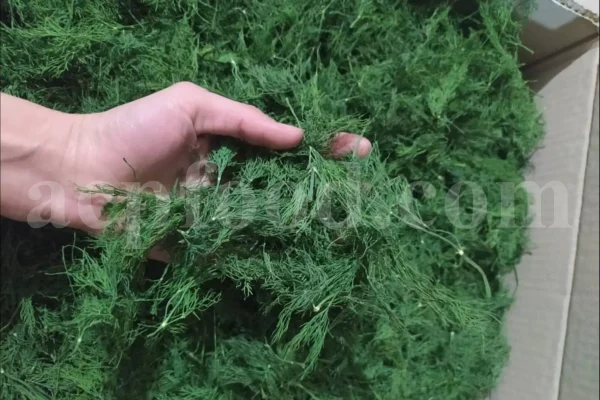



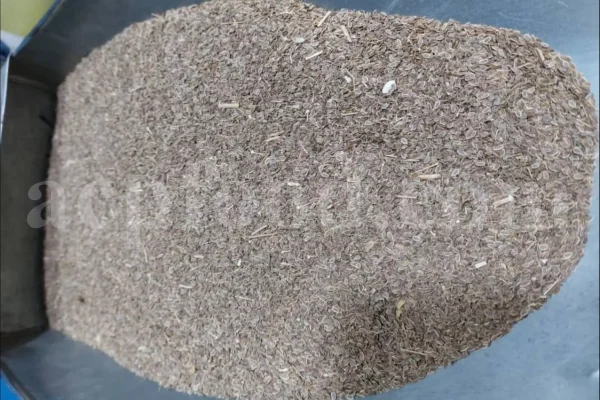

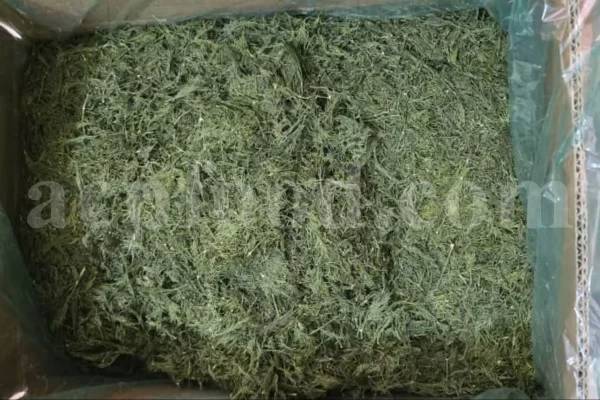
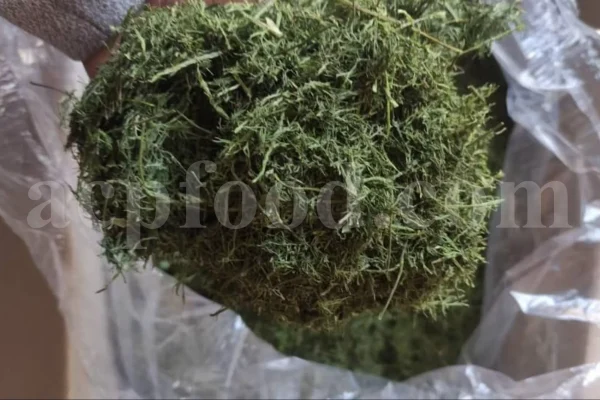
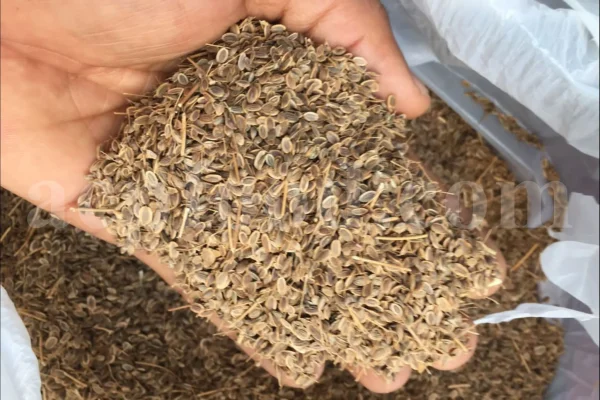

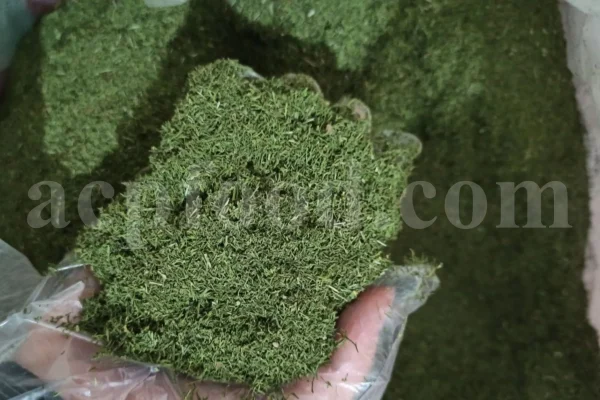
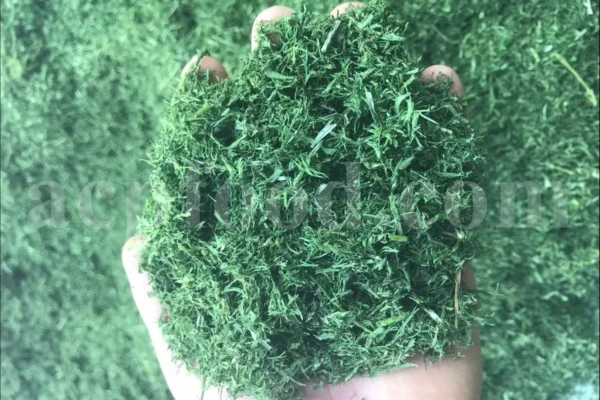
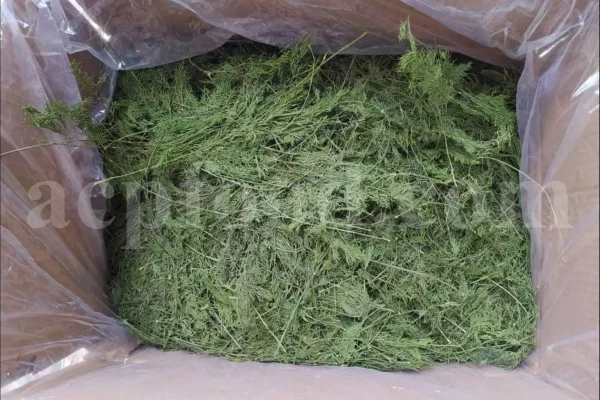

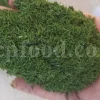
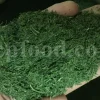
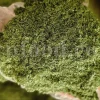
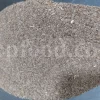

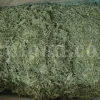


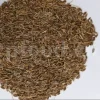
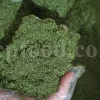
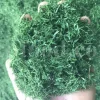
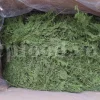
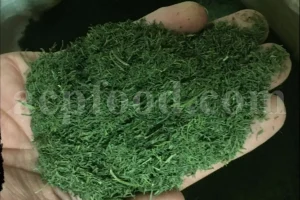
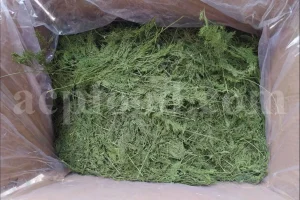
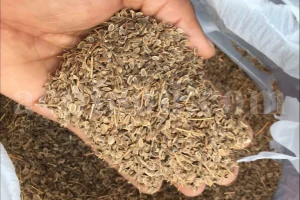
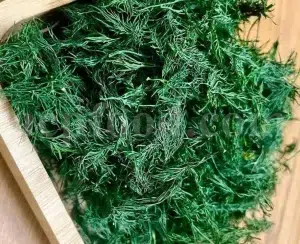
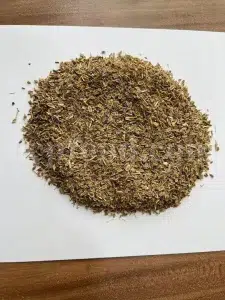
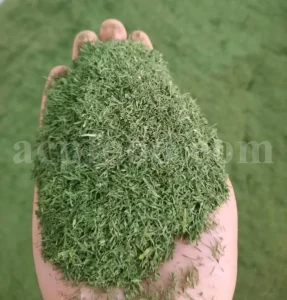
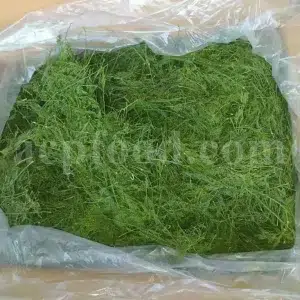
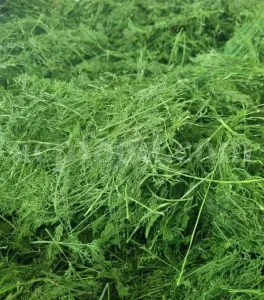
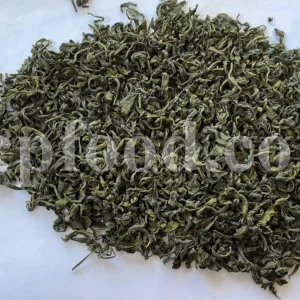
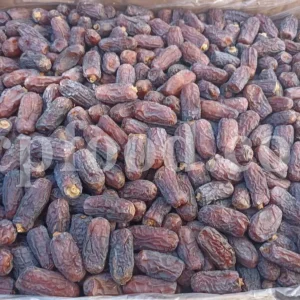
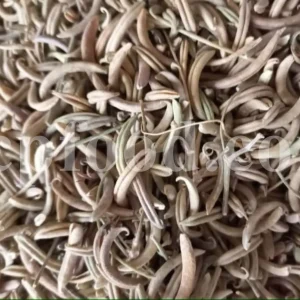
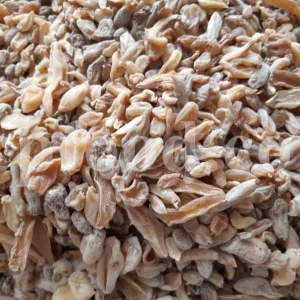
Reviews
There are no reviews yet.